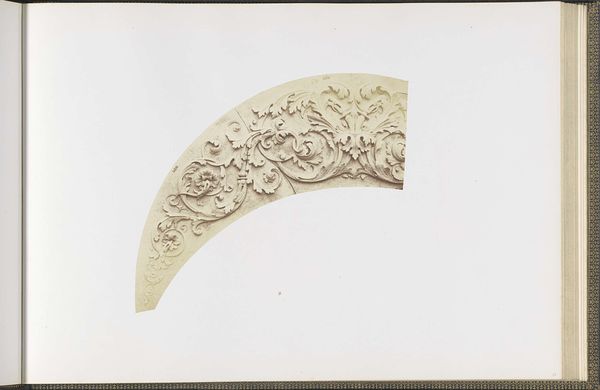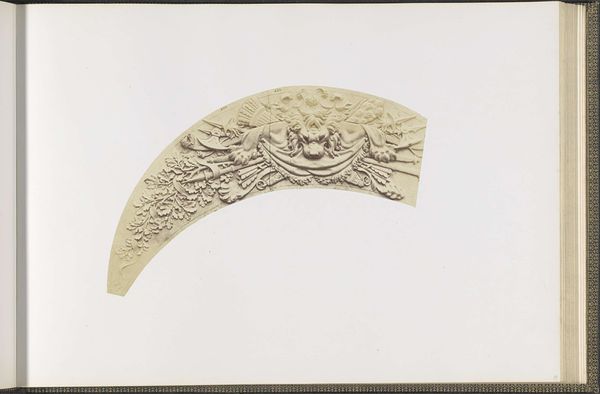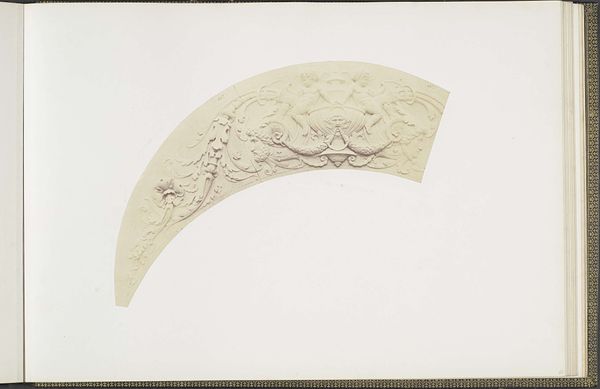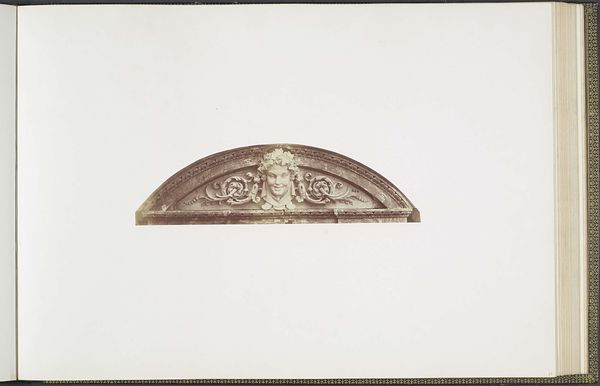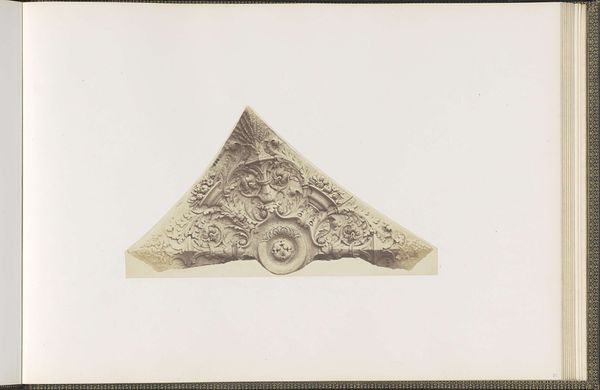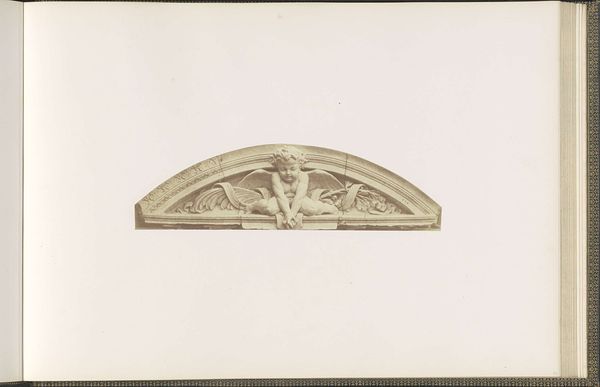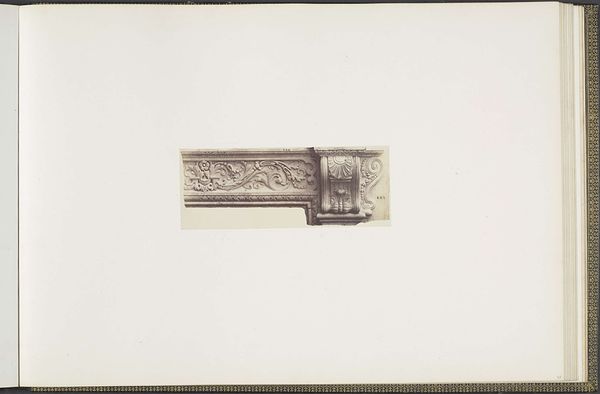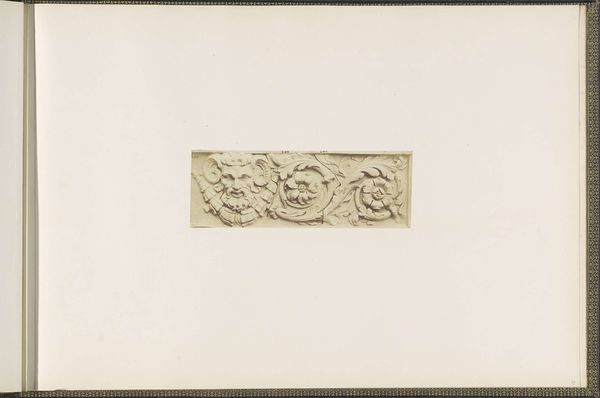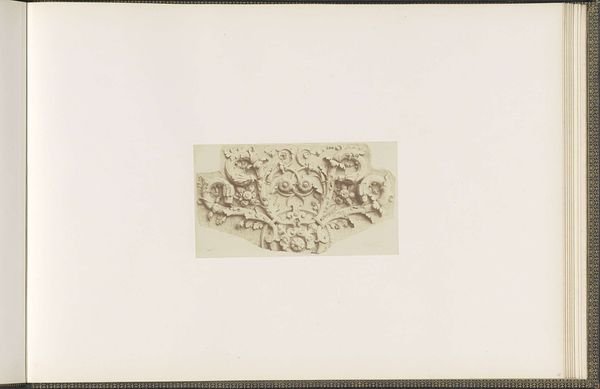
Gipsmodel voor een gewelfversiering van het Pavillon Richelieu in het Palais du Louvre c. 1855 - 1857
0:00
0:00
print, photography, albumen-print, architecture
#
neoclacissism
# print
#
photography
#
albumen-print
#
architecture
Dimensions: height 376 mm, width 523 mm
Copyright: Rijks Museum: Open Domain
Editor: So, this is an albumen print by Édouard Baldus, taken sometime between 1855 and 1857. It's a photograph of a plaster model for ceiling decorations in the Louvre's Pavillon Richelieu. The details are so intricate! It has this cool, classical vibe... but I'm also struck by the odd shape of the image. What exactly am I looking at? How do you interpret this work? Curator: Ah, Baldus. A master of light and shadow! To me, this fragment speaks volumes. We're not just seeing decoration; we're witnessing the architectural ambitions of Napoleon III's Paris taking form. Look closely – that ornate detailing, it echoes the grandeur of the Roman Empire, a deliberate attempt to link his reign with the glory of antiquity. The photograph isolates this piece, doesn't it? Sets it apart. It’s not just documenting a model, it's almost… glorifying it. Editor: That's interesting, I hadn't thought of it as glorifying. The stark white background really makes the details pop, but it also makes it feel so... isolated, like you said. Was photography a common way to document architectural plans at this time? Curator: Absolutely. But Baldus elevates it. He was commissioned for this, right? He’s not just documenting. Think of the ambition – to capture a piece of the Louvre, a symbol of French power and history. He has rendered it almost weightless! The shadow gives a dramatic feeling. Can you feel that? Editor: Yeah, the high contrast almost makes it seem sculptural itself. I initially missed that layer entirely. Curator: Exactly. What seemed simply "classical" is revealed as part of an important vision. The photograph shows more than the plaster. It gives us light and air, drama and feeling, a sense of monumental vision. The medium reveals it to be simultaneously present and a fragment, simultaneously monumental and manageable. That's what great art, and great art photography, achieves. Editor: This gives me so much to think about when considering historical context and technique.
Comments
No comments
Be the first to comment and join the conversation on the ultimate creative platform.

